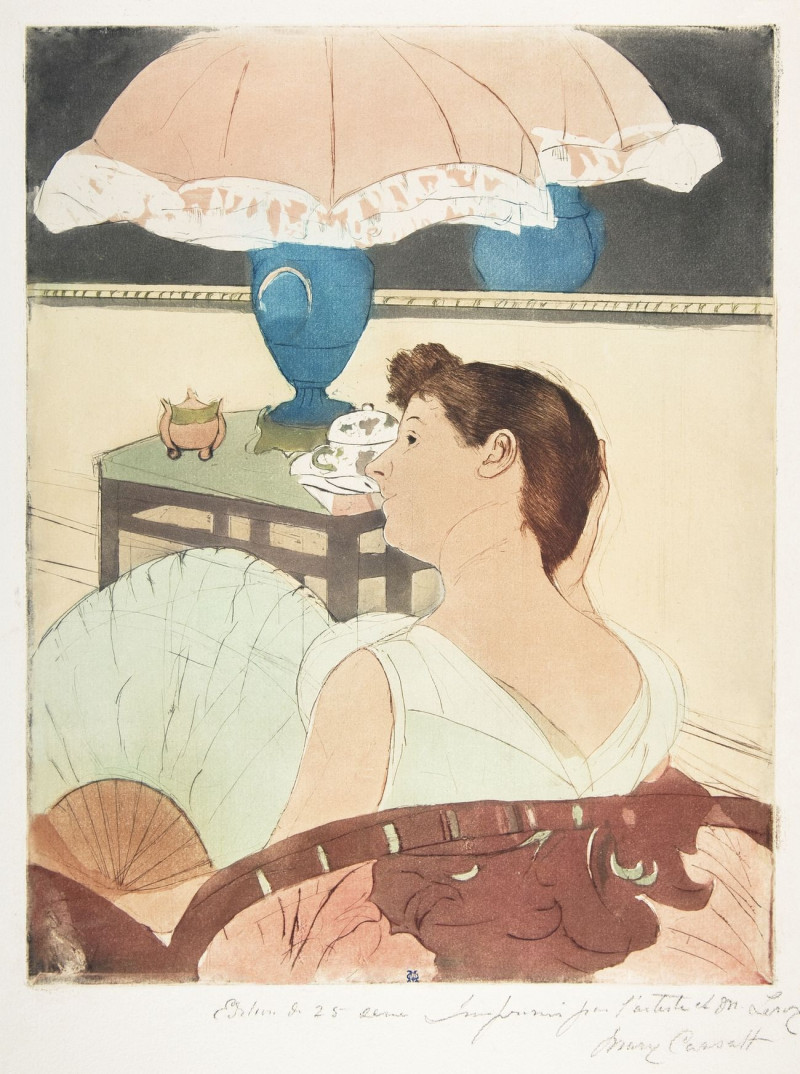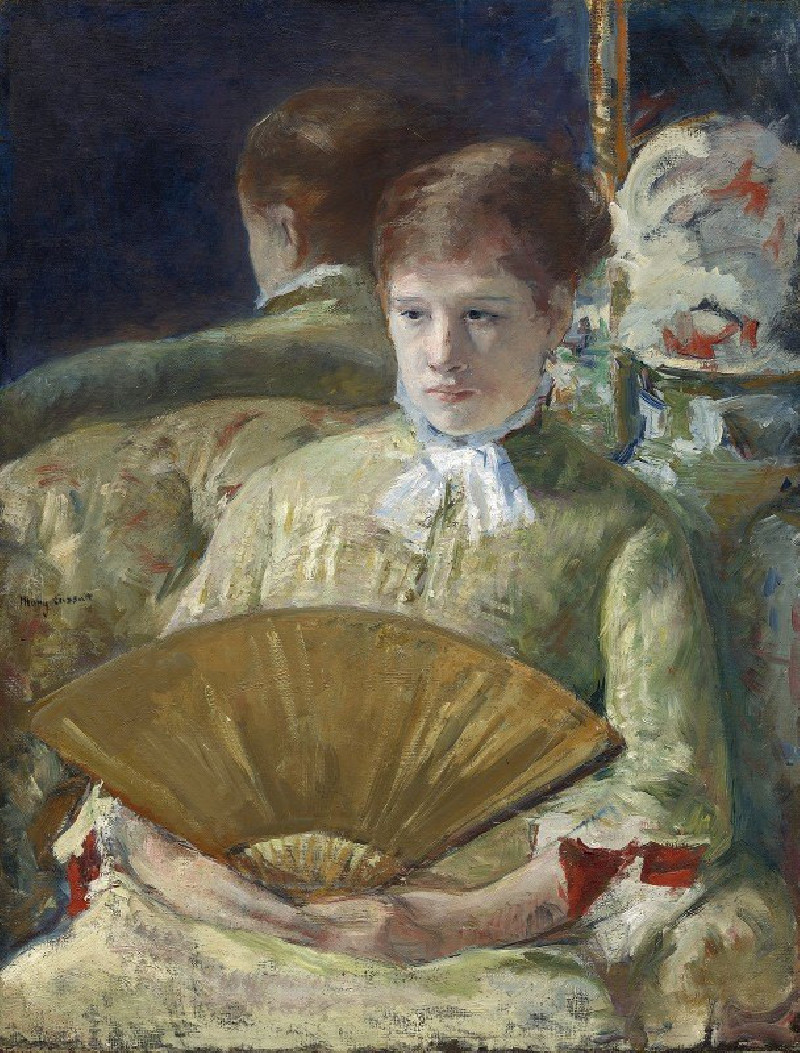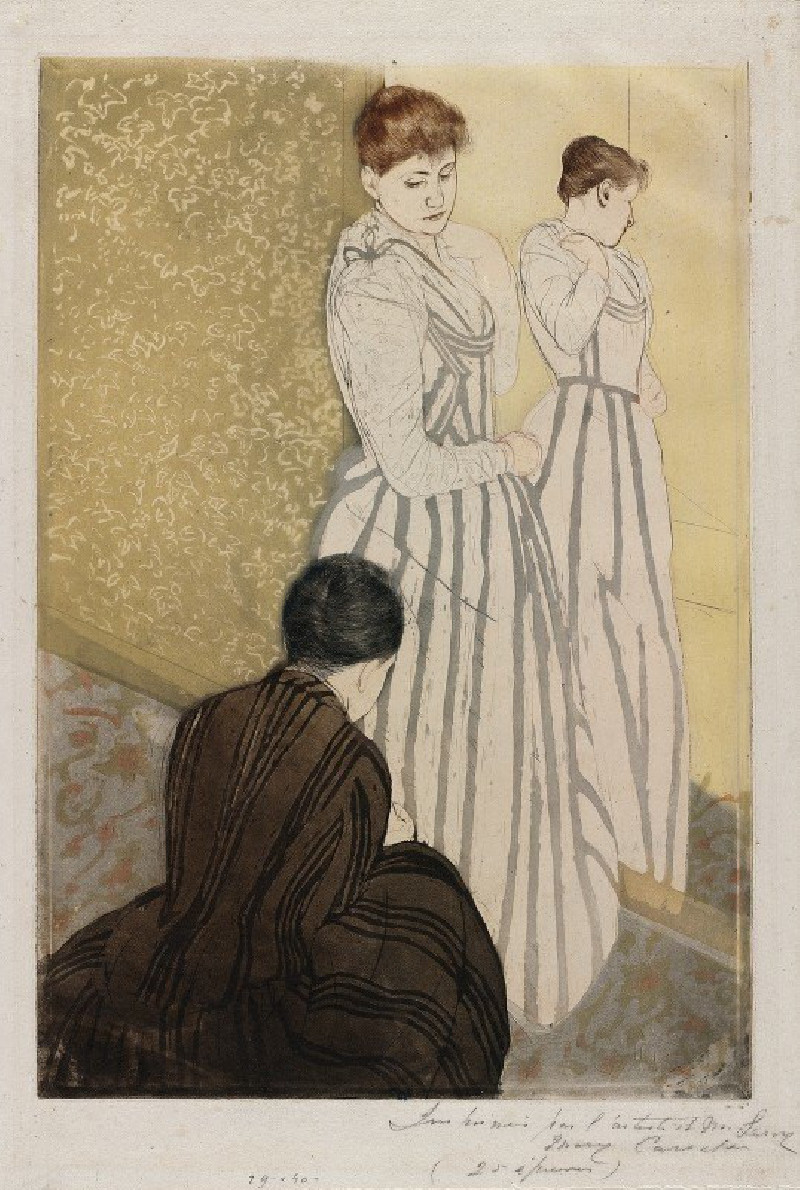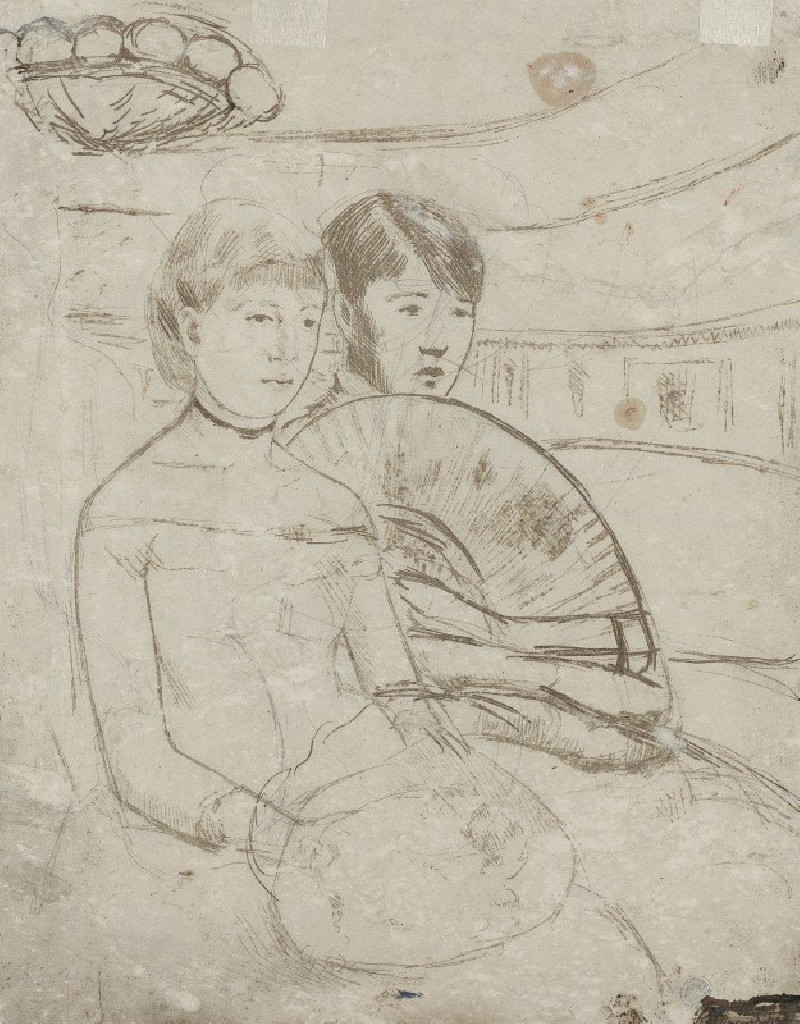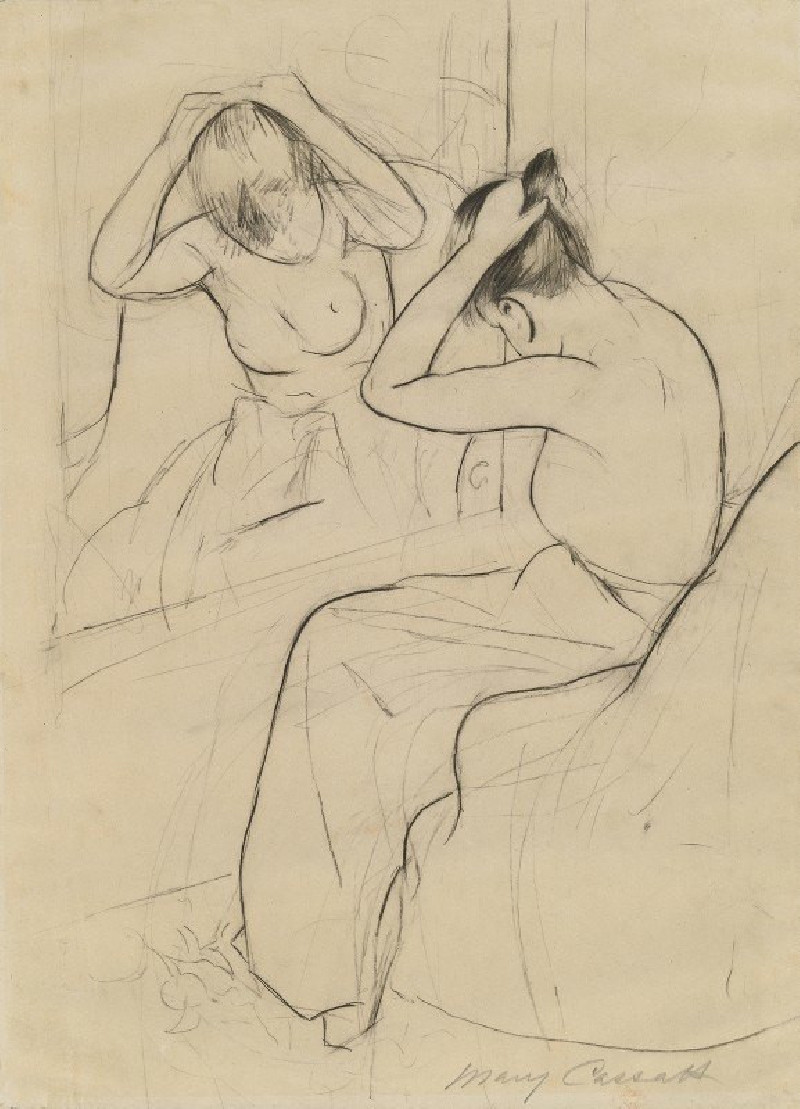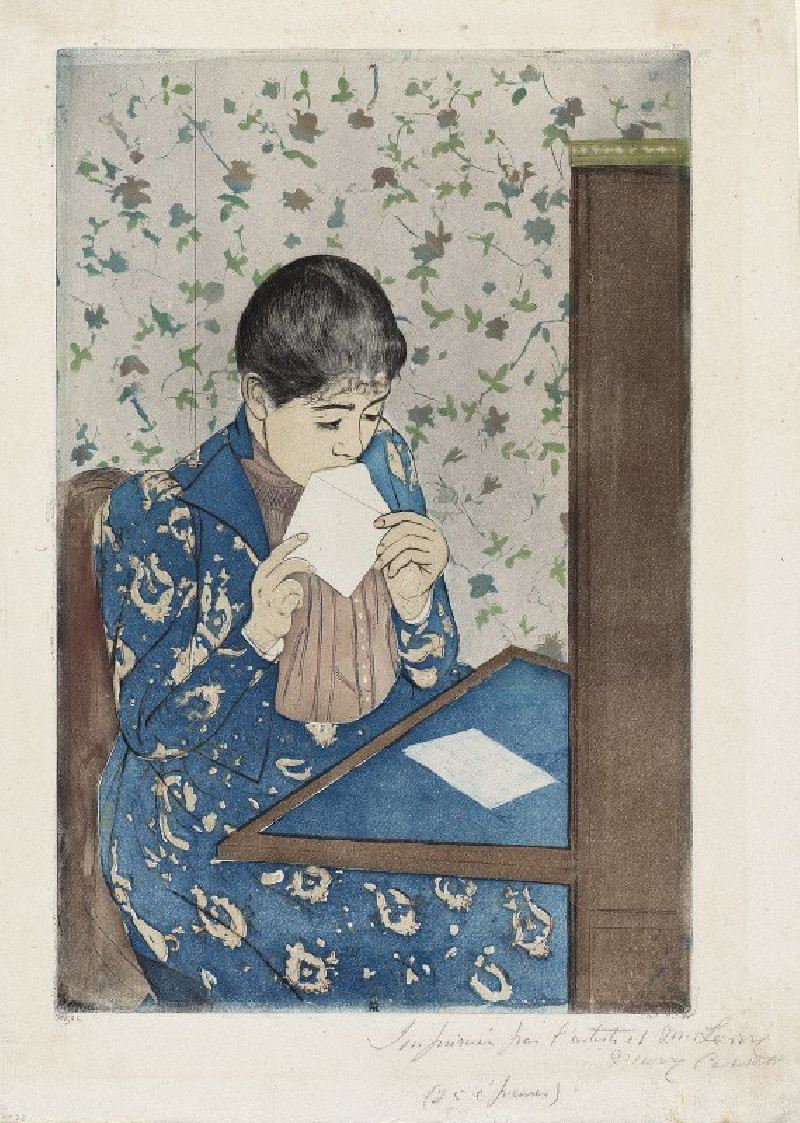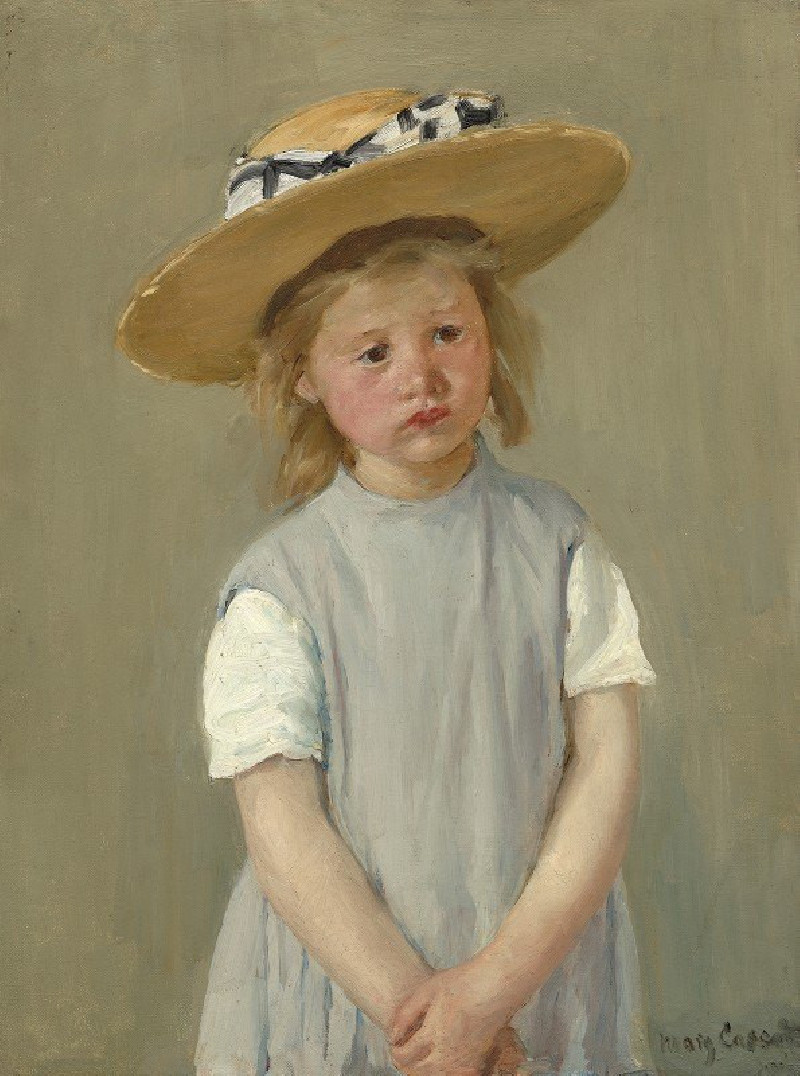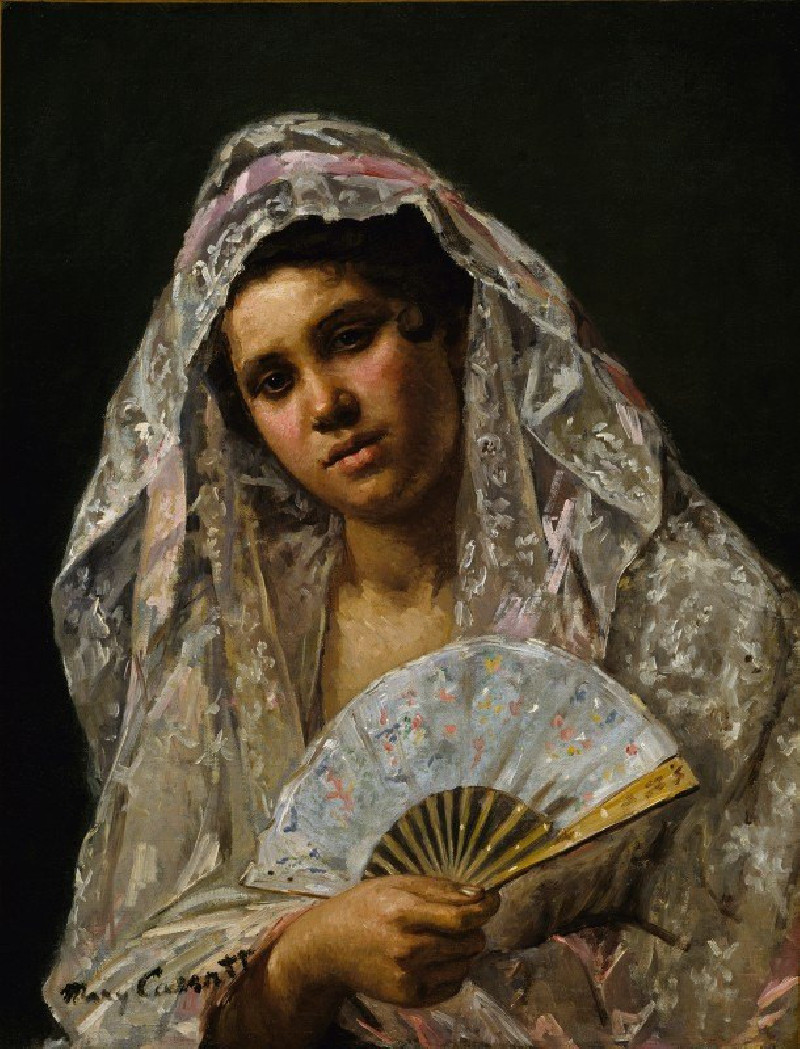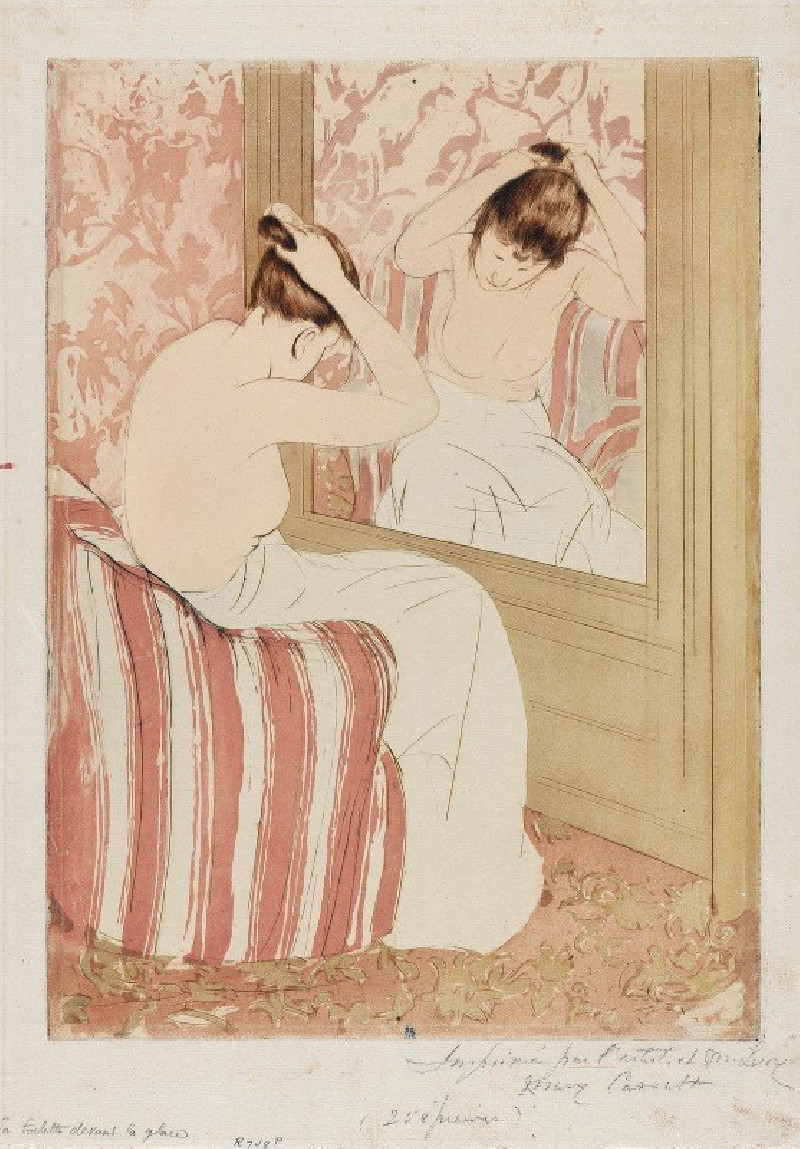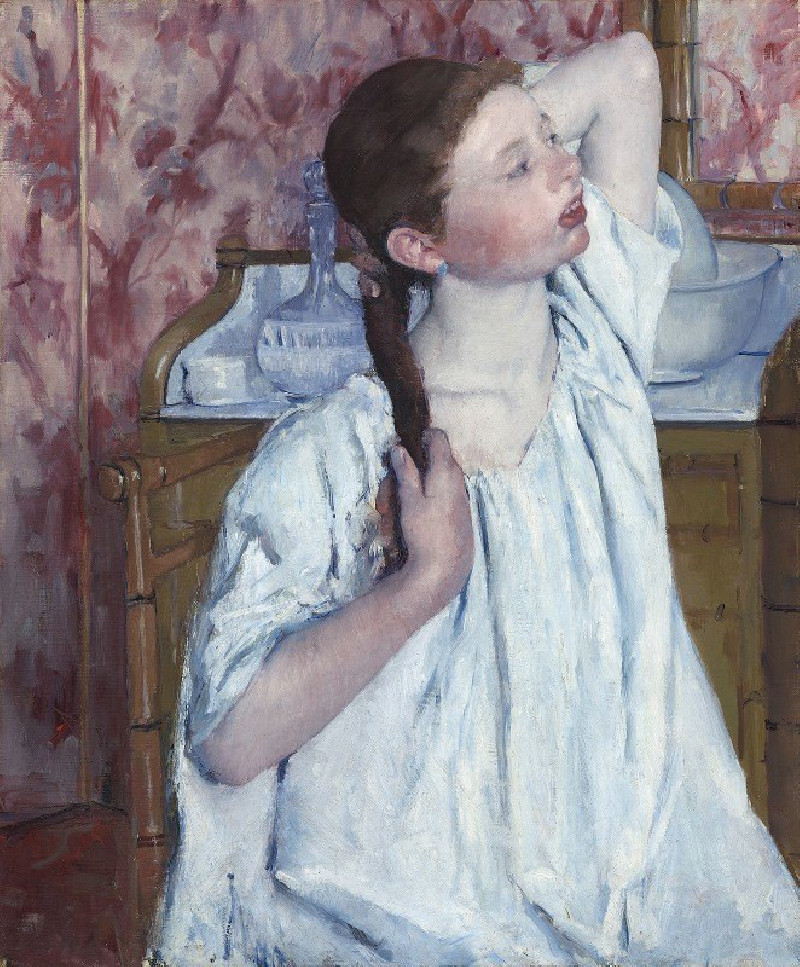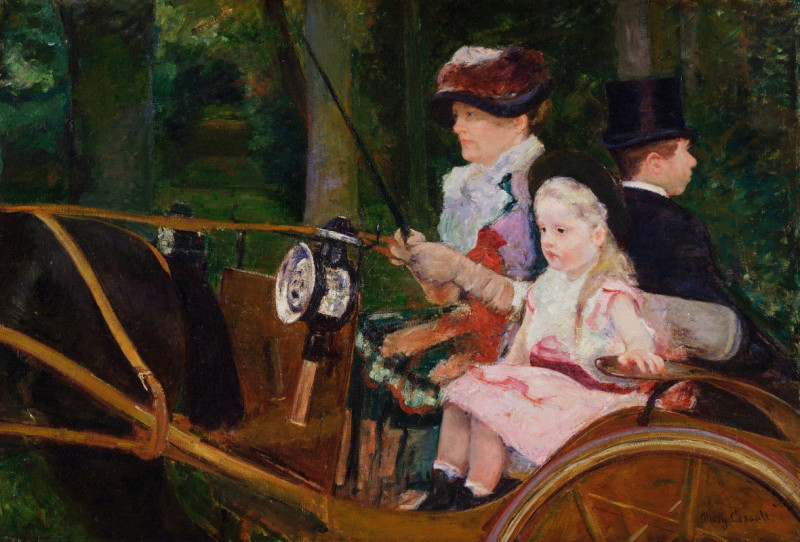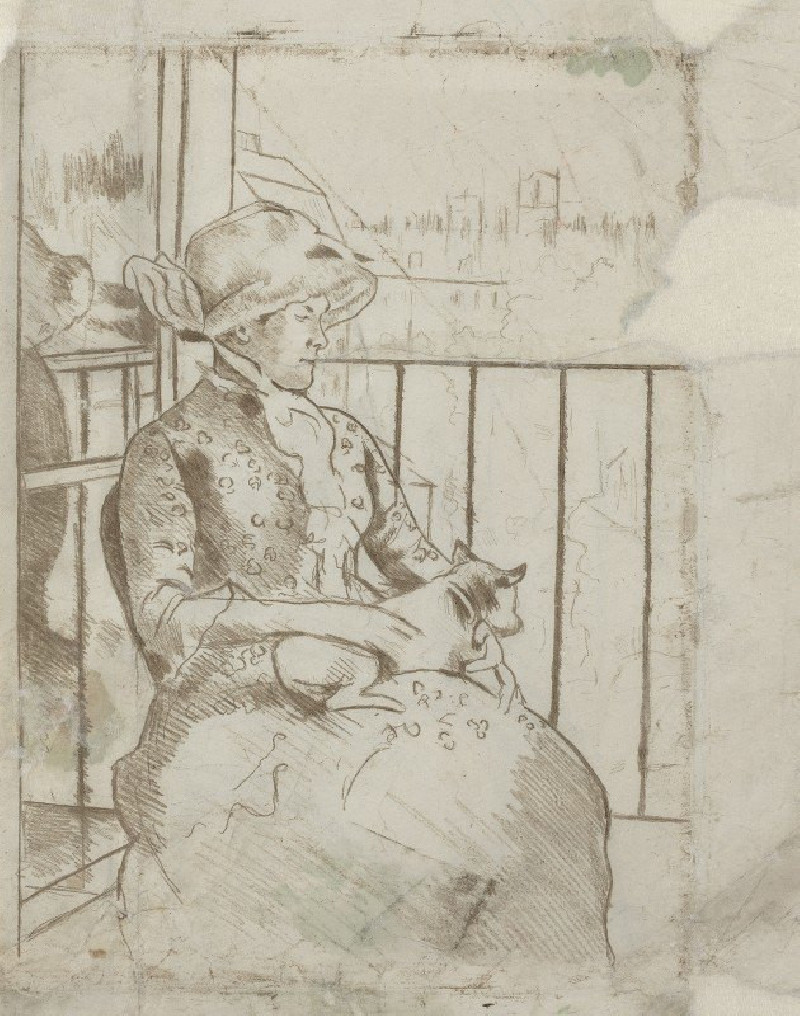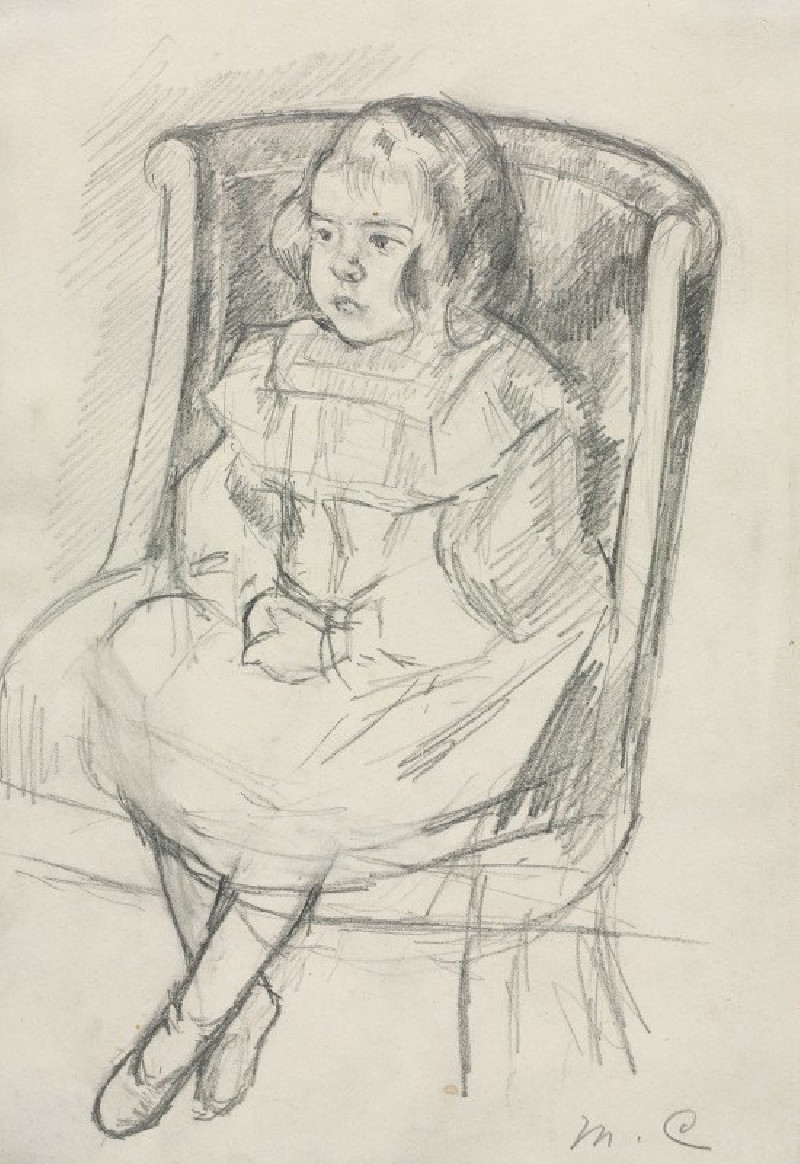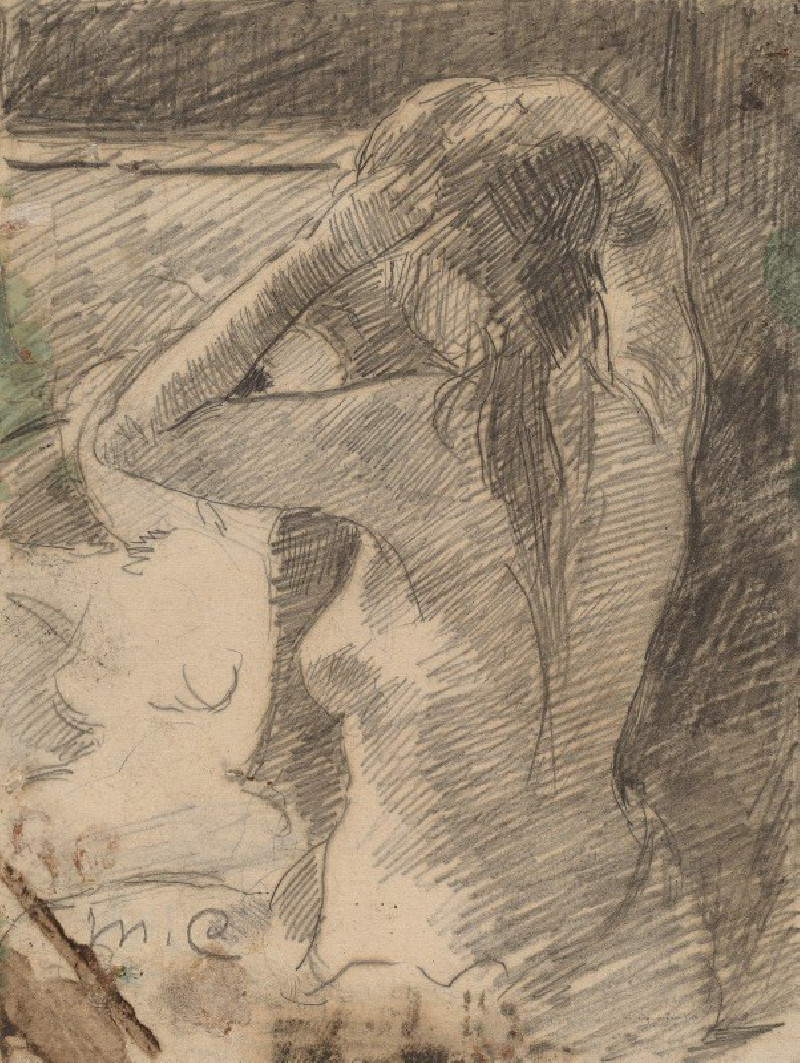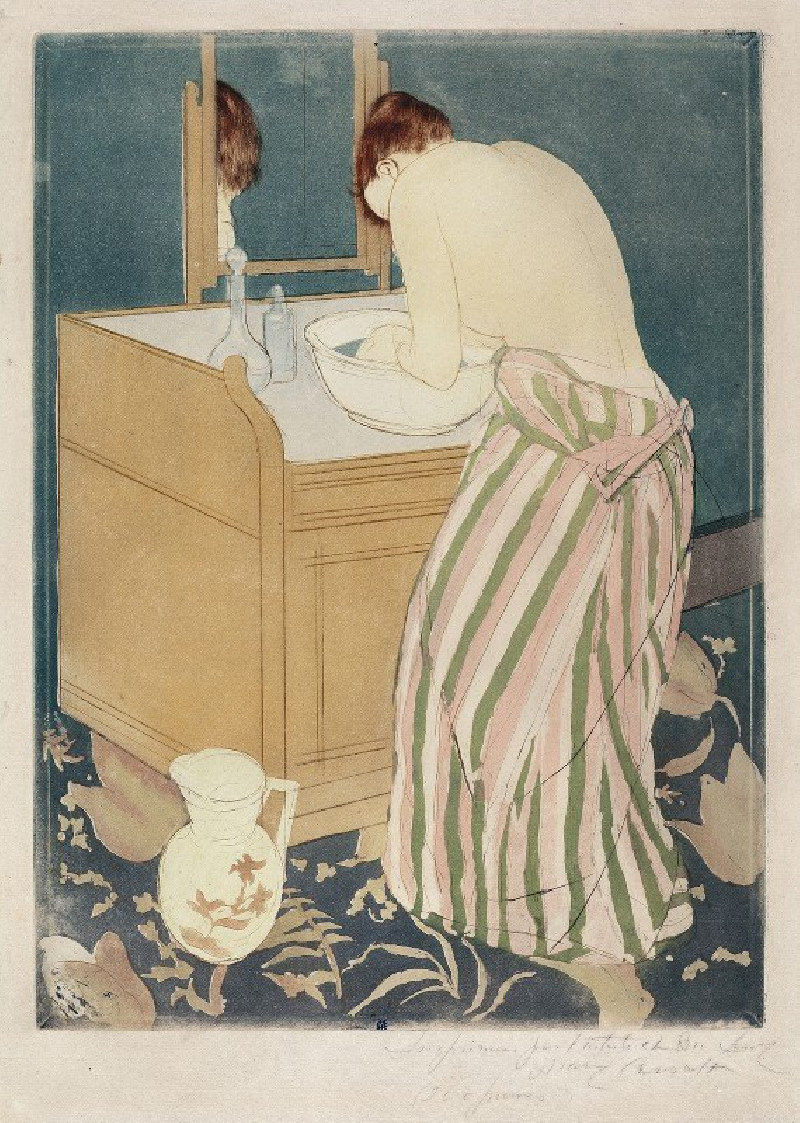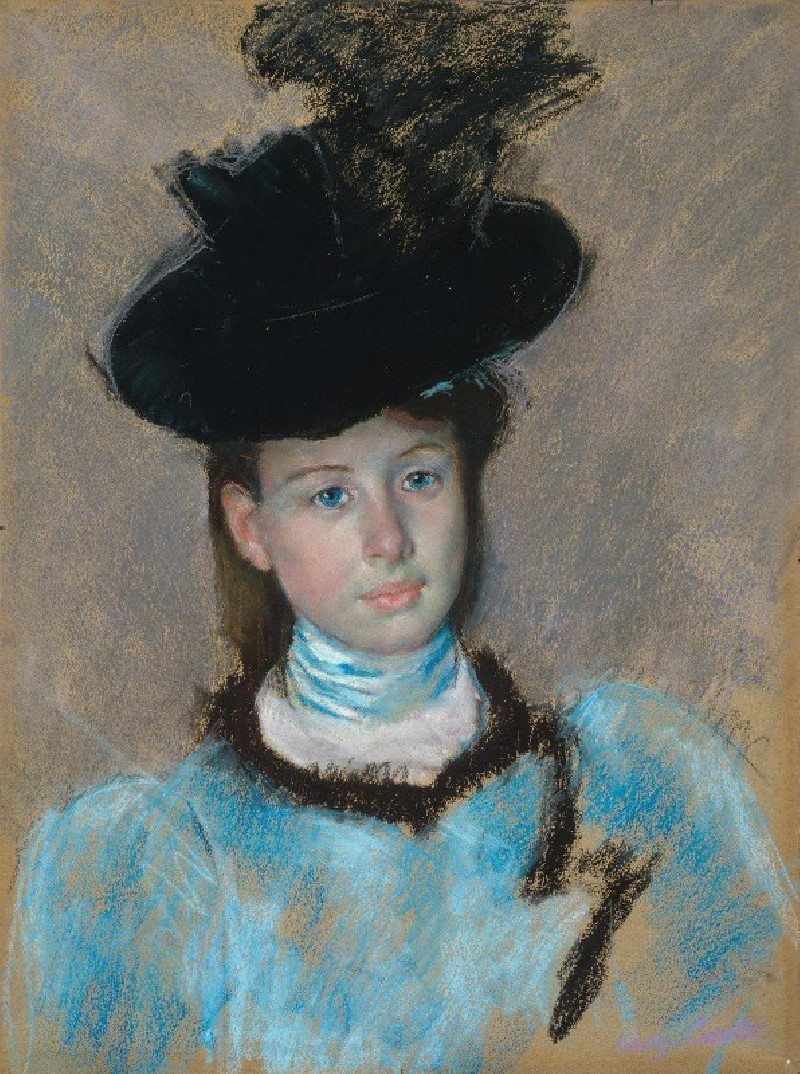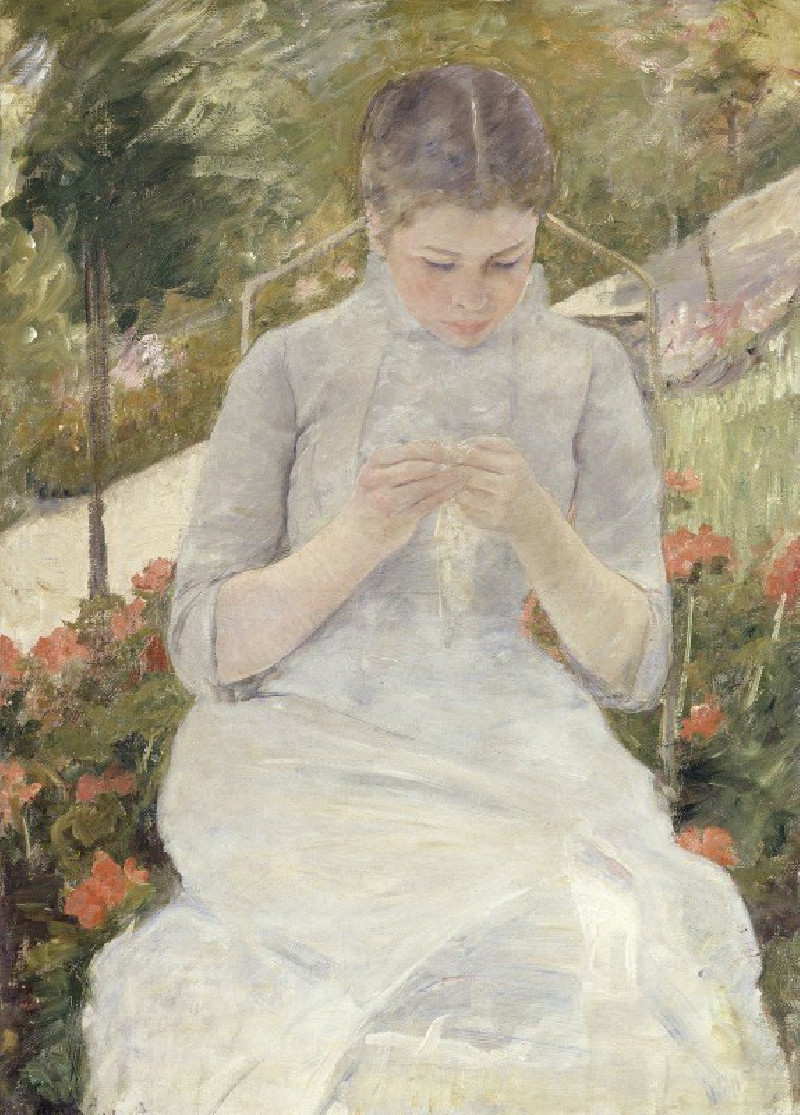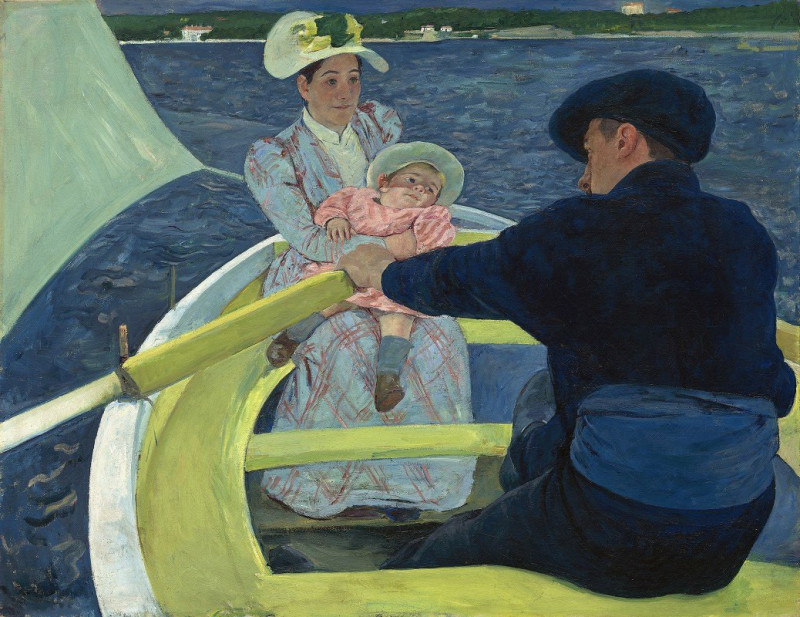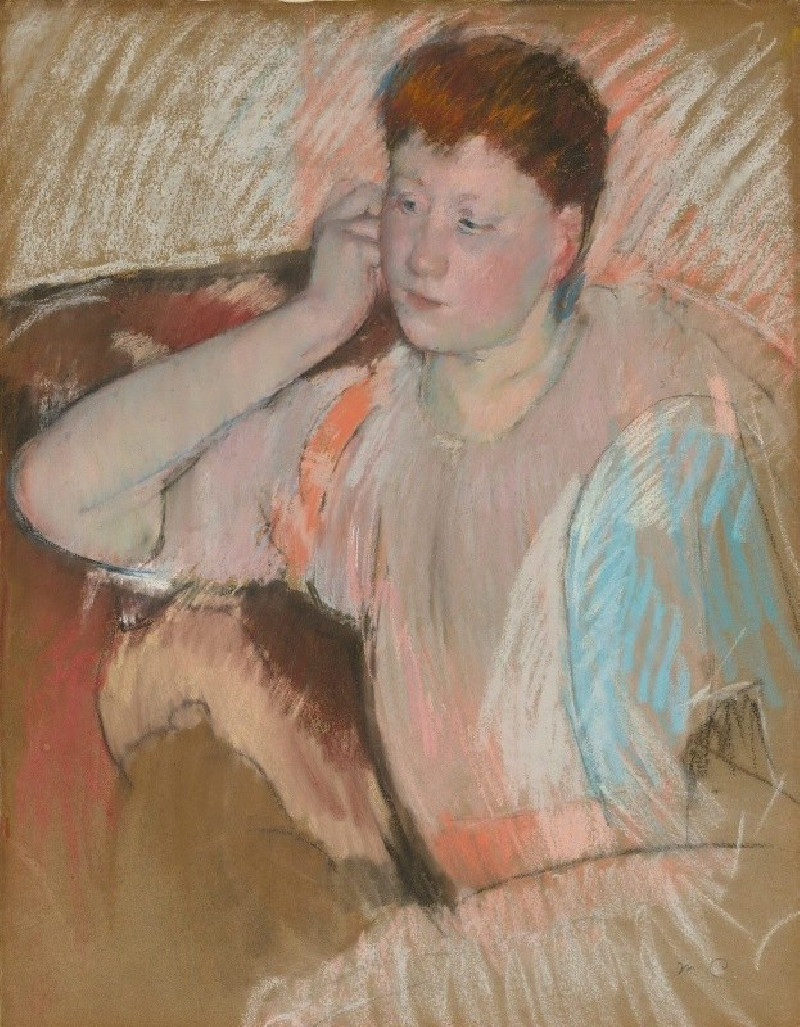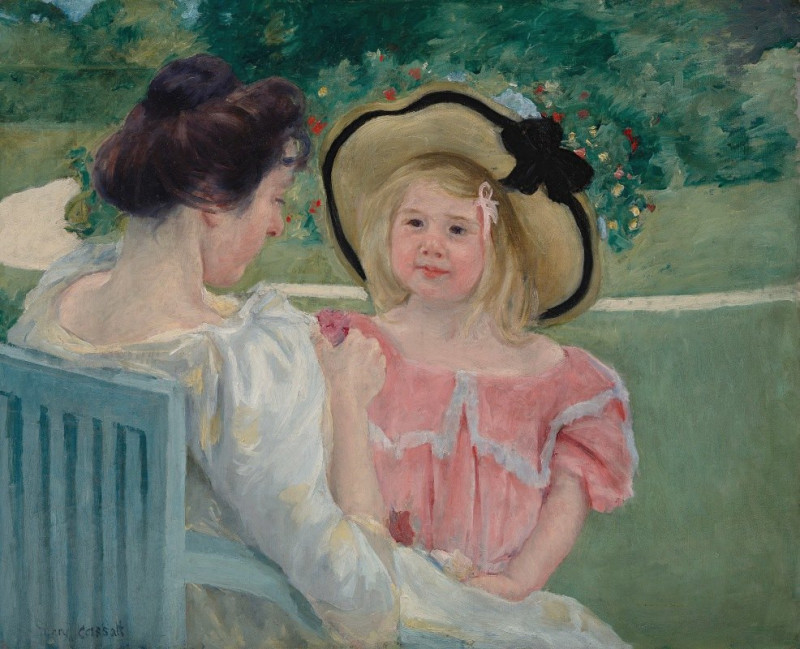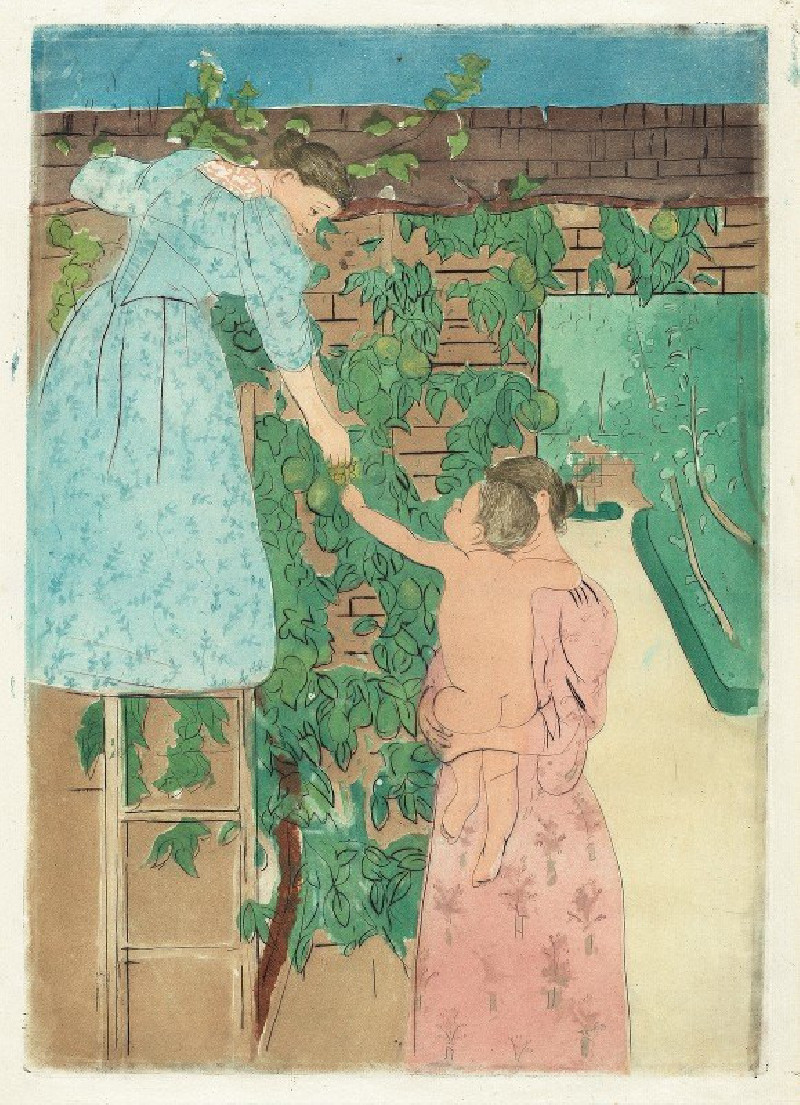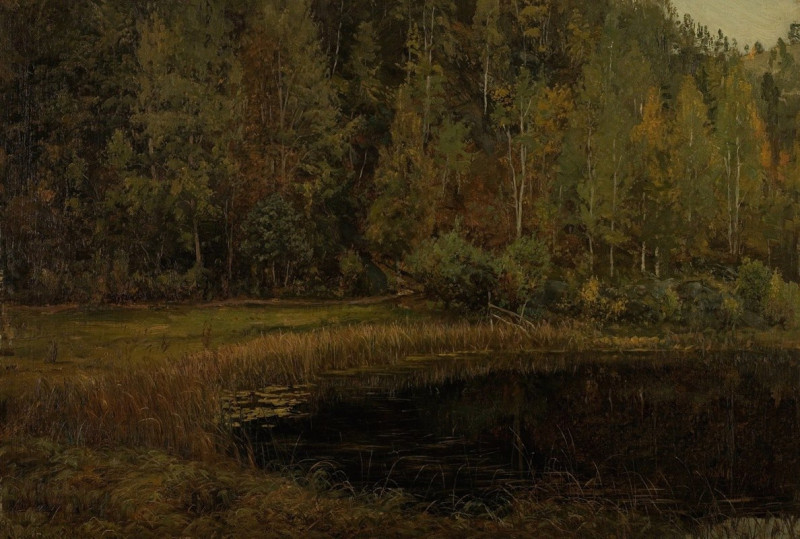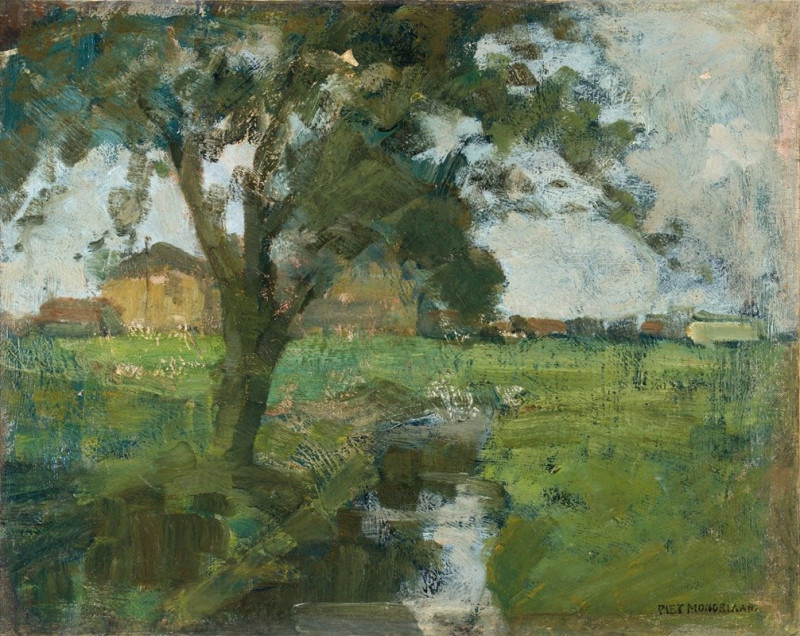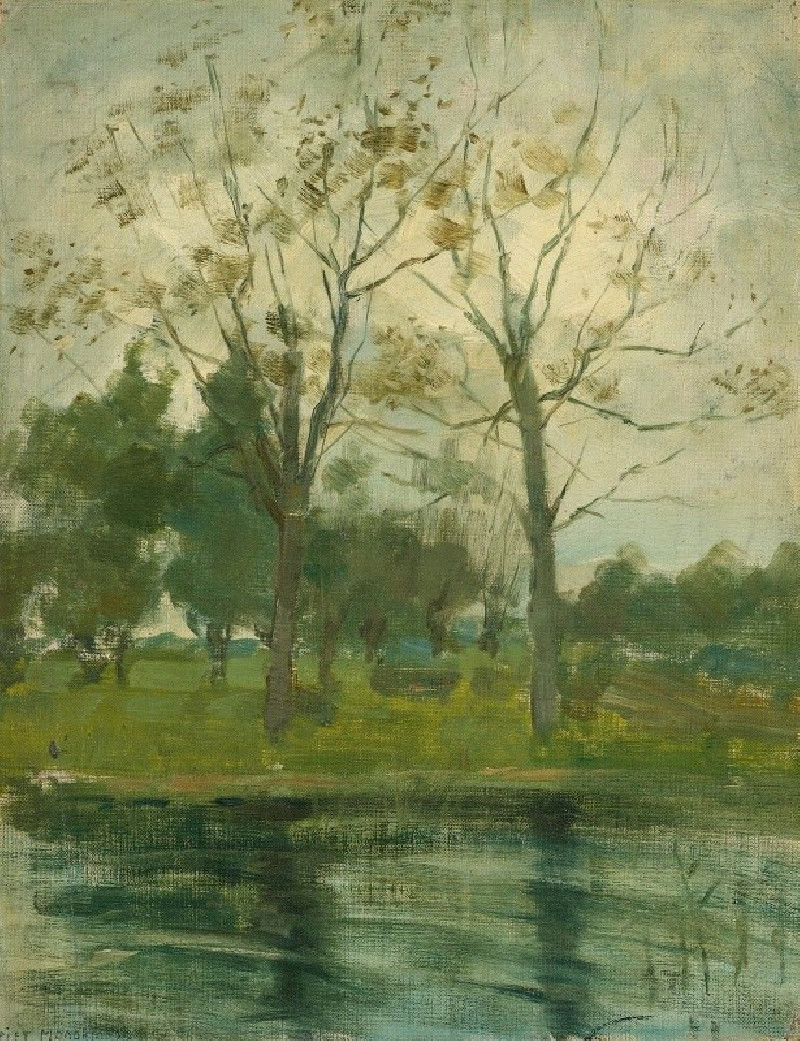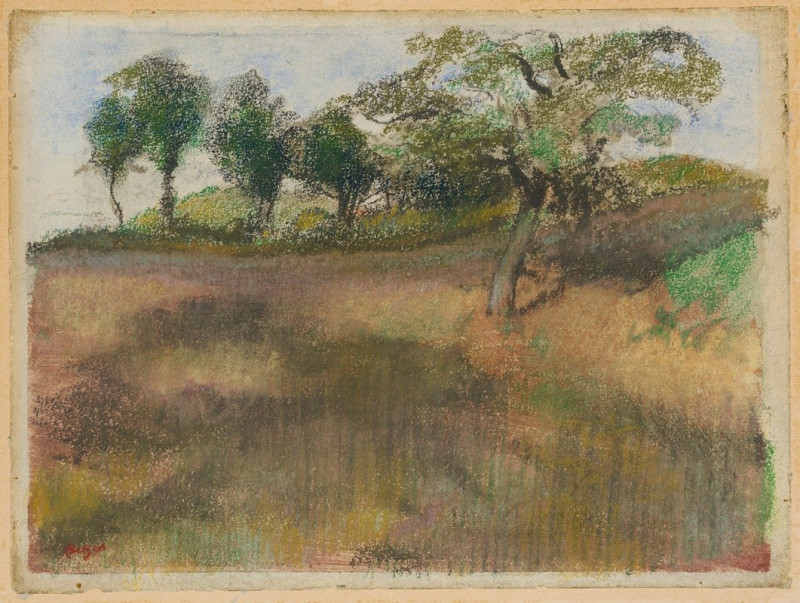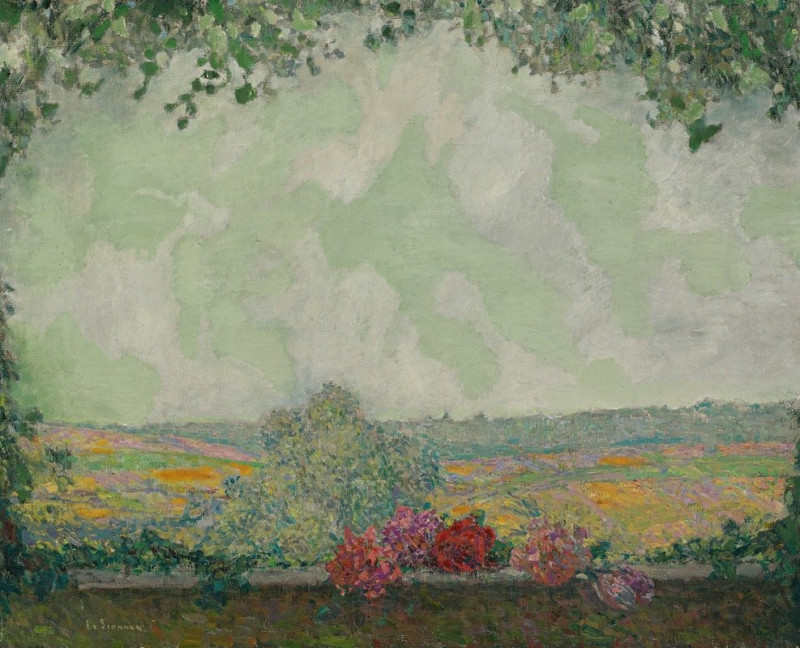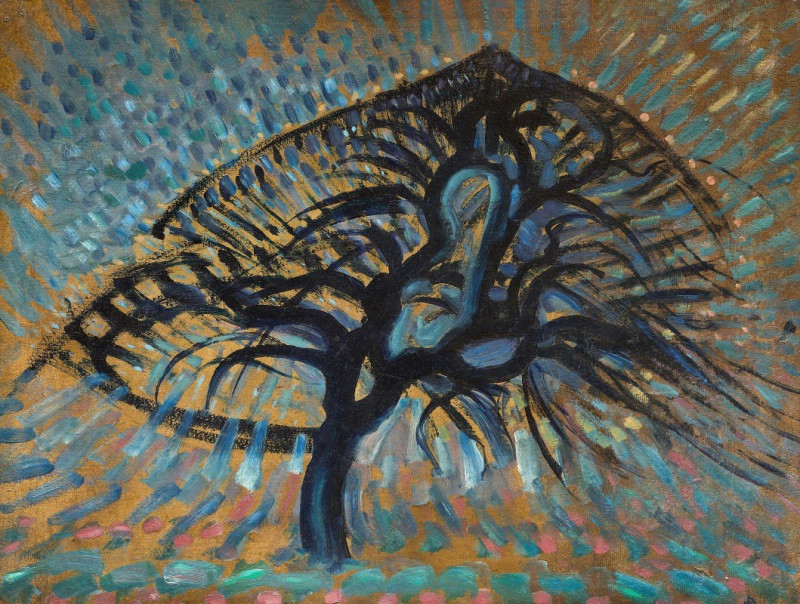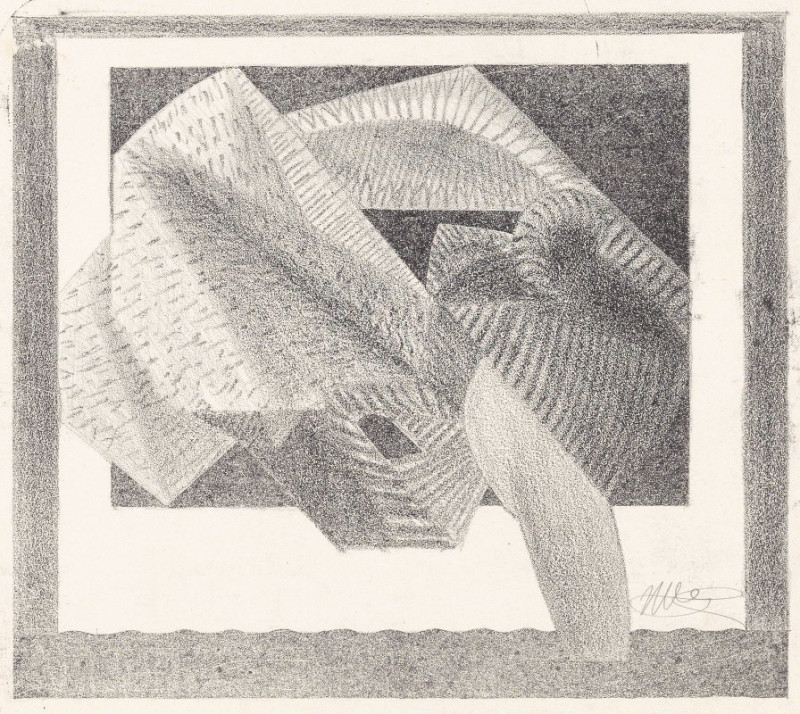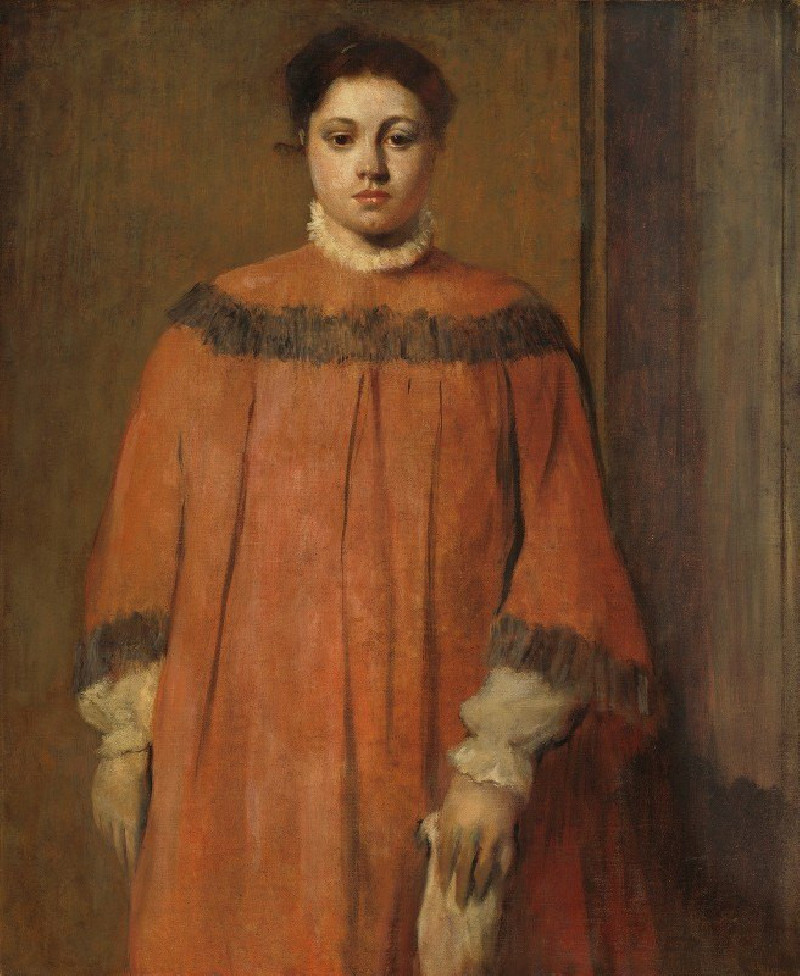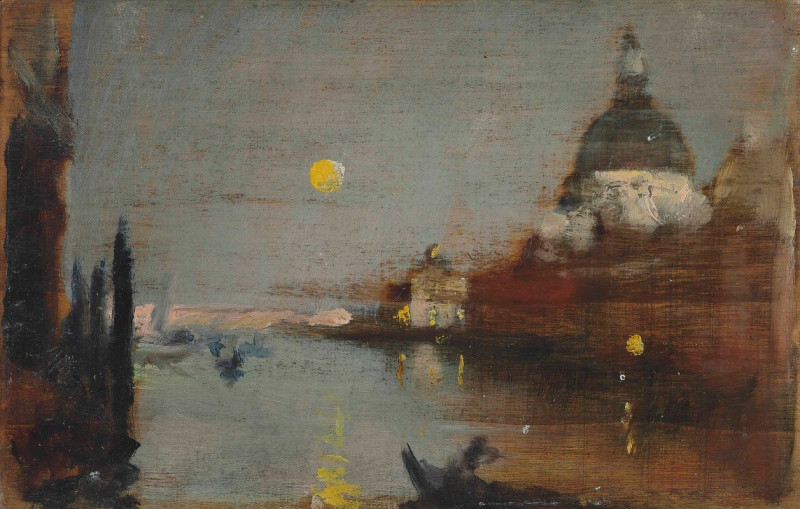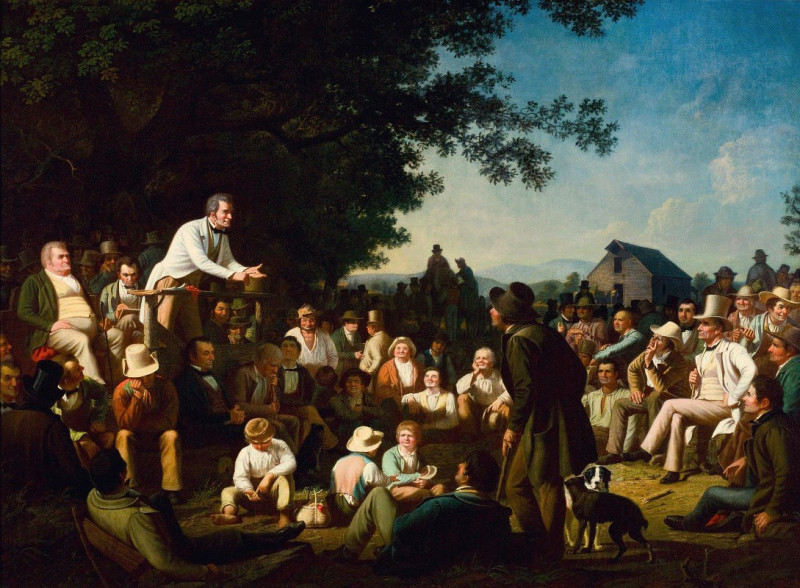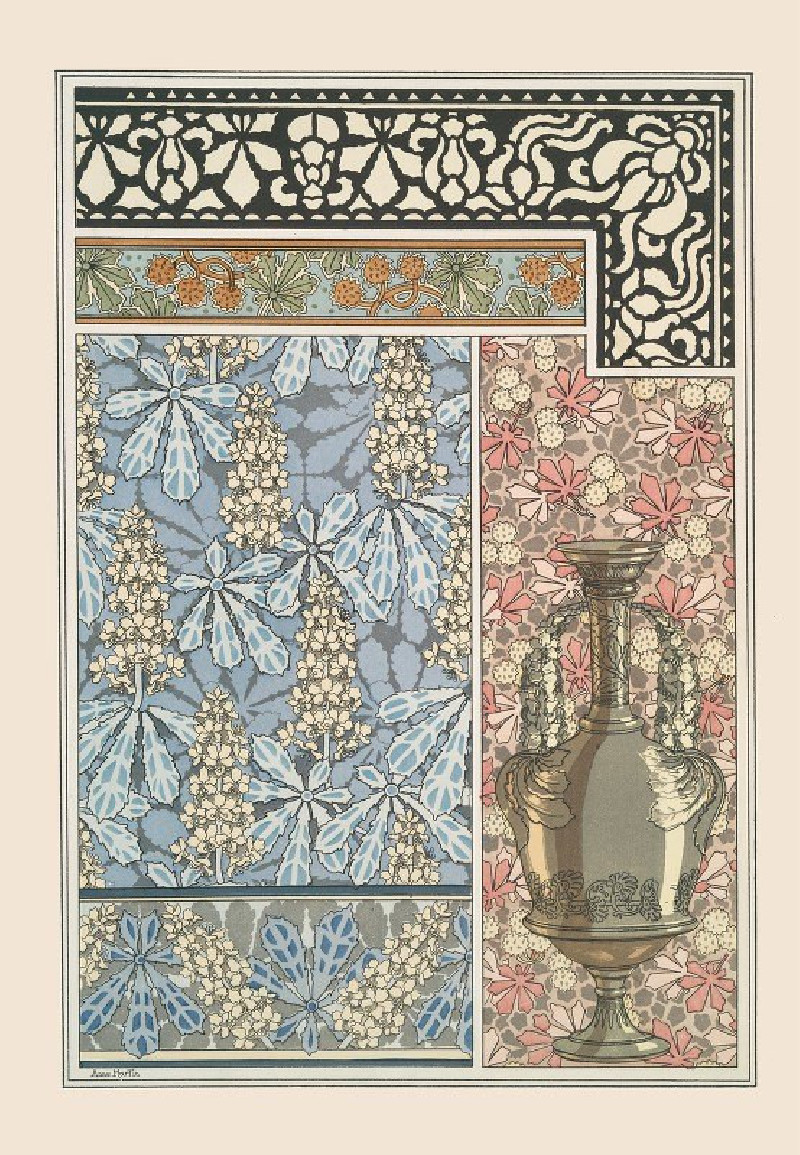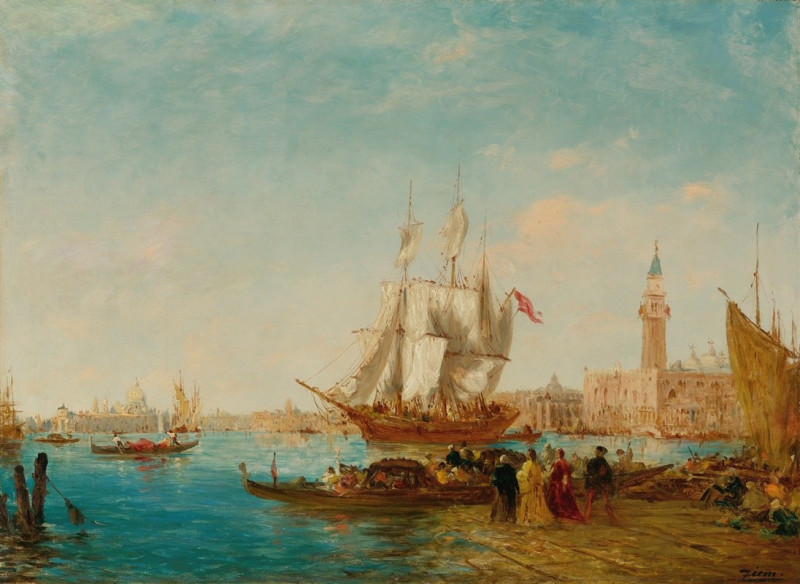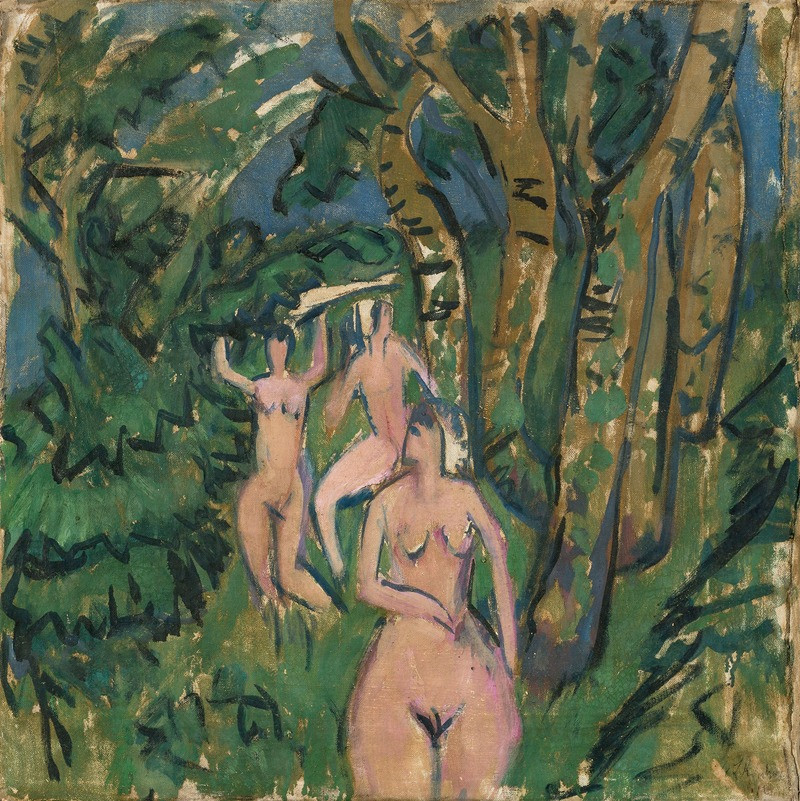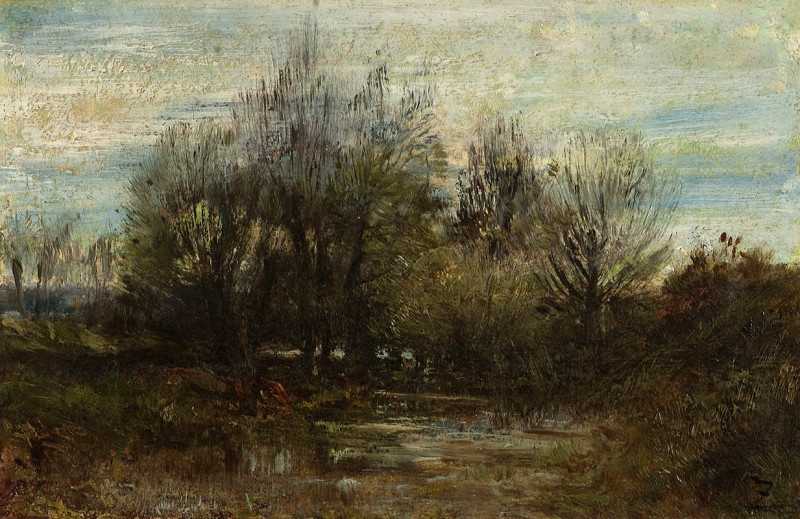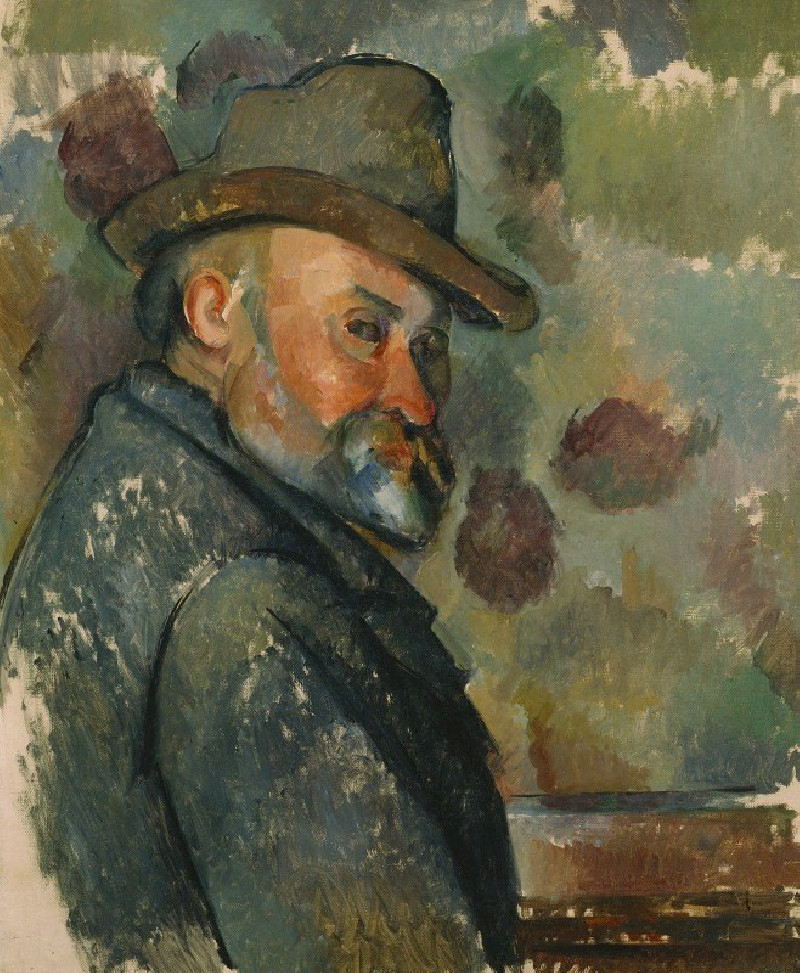The Lamp
Technique: Giclée quality print
Recommended by our customers
More about this artwork
The painting "The Lamp" by Mary Cassatt captures an intimate and contemplative moment. It features a soft palette of colors and delicate rendering typical of Cassatt's style. The main subject of the painting is a woman seen from behind, her head turned slightly to the side as though lost in thought. She is sitting under a large lamp with a fringed, pale pink shade that casts warm light over her. The lamp itself rests on a table, visibly a significant focal point of the composition due to its size and central position.The woman's apparel is simple, yet elegant—a light colored dress with a hint of a sleeve showing, suggesting a moment of casual repose at home. Next to the lamp on the table, there is a small teapot and cup, which adds to the homely feel and suggests that this may be a moment of solitude accompanied by tea. The textures in the image, such as the detail on the lampshade and the woman's hair, add depth and detail to the composition, showcasing Cassatt's attention to the subtleties of light, shadow, and form.This painting beautifully reflects Cassatt’s focus on everyday domestic scenes and her ability to convey the serenity and private experiences of women in a respectful and dignified manner. Her work often shines a light on the personal and reflective moments that are typically overlooked in grand historical or mythological paintings, making her pieces relatable and emotionally resonant.
Delivery
Returns
Mary Stevenson Cassatt was an American painter and printmaker. She was born in Allegheny City, Pennsylvania (now part of Pittsburgh’s North Side), but lived much of her adult life in France where she befriended Edgar Degas and exhibited with the Impressionists. Cassatt often created images of the social and private lives of women, with particular emphasis on the intimate bonds between mothers and children.
She was described by Gustave Geffroy as one of "les trois grandes dames" (the three great ladies) of Impressionism alongside Marie Bracquemond and Berthe Morisot.In 1879, Diego Martelli compared her to Degas, as they both sought to depict movement, light, and design in the most modern sense.

